Creating a scalable way for visitors to check in and reach help when no one’s at the front desk.
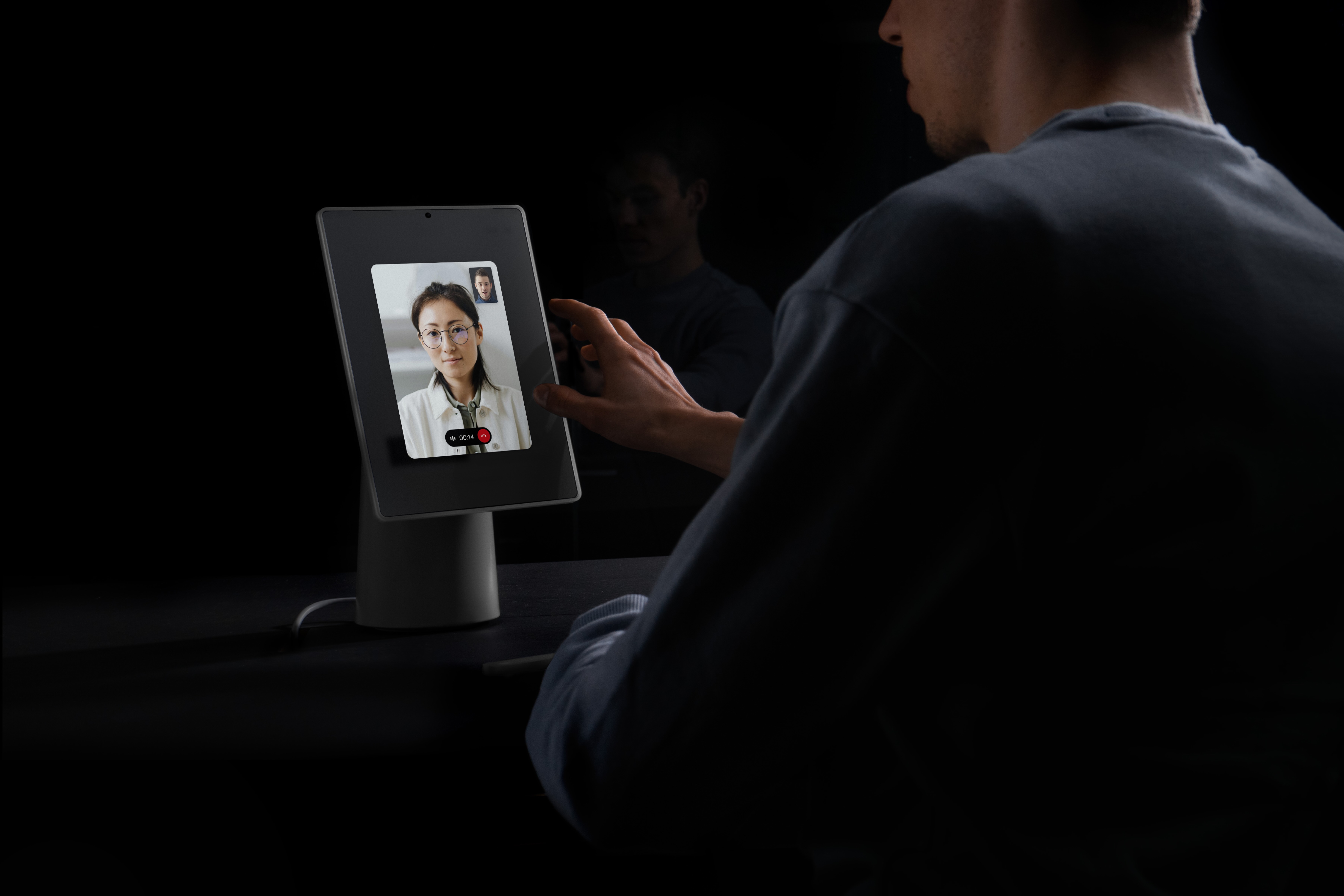
Overview
Virtual Front Desk helps companies manage visitor calls even when no receptionist is physically present. I led end-to-end design of a system that routes visitor calls intelligently based on time, team setup, and availability. I designed across touchpoints (kiosk, admin, Slack) to reduce missed calls, support hybrid teams, and improve the visitor experience.
What I did
• Led design from concept to launch for Envoy’s Virtual Front Desk
• Defined the end-to-end experience across kiosk, web, mobile, and integrations (Slack, Teams)
• Collaborated with PM to pitch the product to leadership and get it greenlit
• Designed modular flows for routing, fallback logic, and multi-office configurations
• Integrated design system components for reuse across other Envoy products
Role
Lead Product Designer
Timeline
Nov 2023 - July 2024 [Pitch + Launch]
July 2024 - Current [New Features]
Platform
Desktop, Kiosk, Mobile, Slack / Teams Integration
Team
1 PM, 7 Eng, 1 Designer (Me)
💡 TL;DR
• Co-pitched and led the creation of Envoy’s Virtual Front Desk, addressing a key post-COVID workplace shift.
• Designed an end-to-end experience across iPad, mobile, and web, leveraging Envoy’s platform to avoid third-party tools.
• Rolled out to 206 real offices globally + more than $178k in ARR (first month) , solving confusion when front desks were unattended and reducing missed check-ins.
The context
As hybrid work reshaped office staffing, many customers faced empty front desks—leaving visitors lost or unattended. At the same time, we saw consistent demand in Productboard, customer calls, and internal teams for a more flexible check-in solution.
My PM and I pitched the Virtual Front Desk as a net-new product: one that used our platform’s strength—directory, video, mobile, and integrations—to solve this problem without new hardware. Leadership backed the idea, and we turned it into a full product initiative.
The problem
As offices reopened post-COVID, many chose not to rehire front desk staff. This led to confusion for visitors, unanswered deliveries, and inconsistent sign-in experiences. Envoy saw an opportunity to extend its platform by enabling virtual front desk coverage — no new hardware needed.
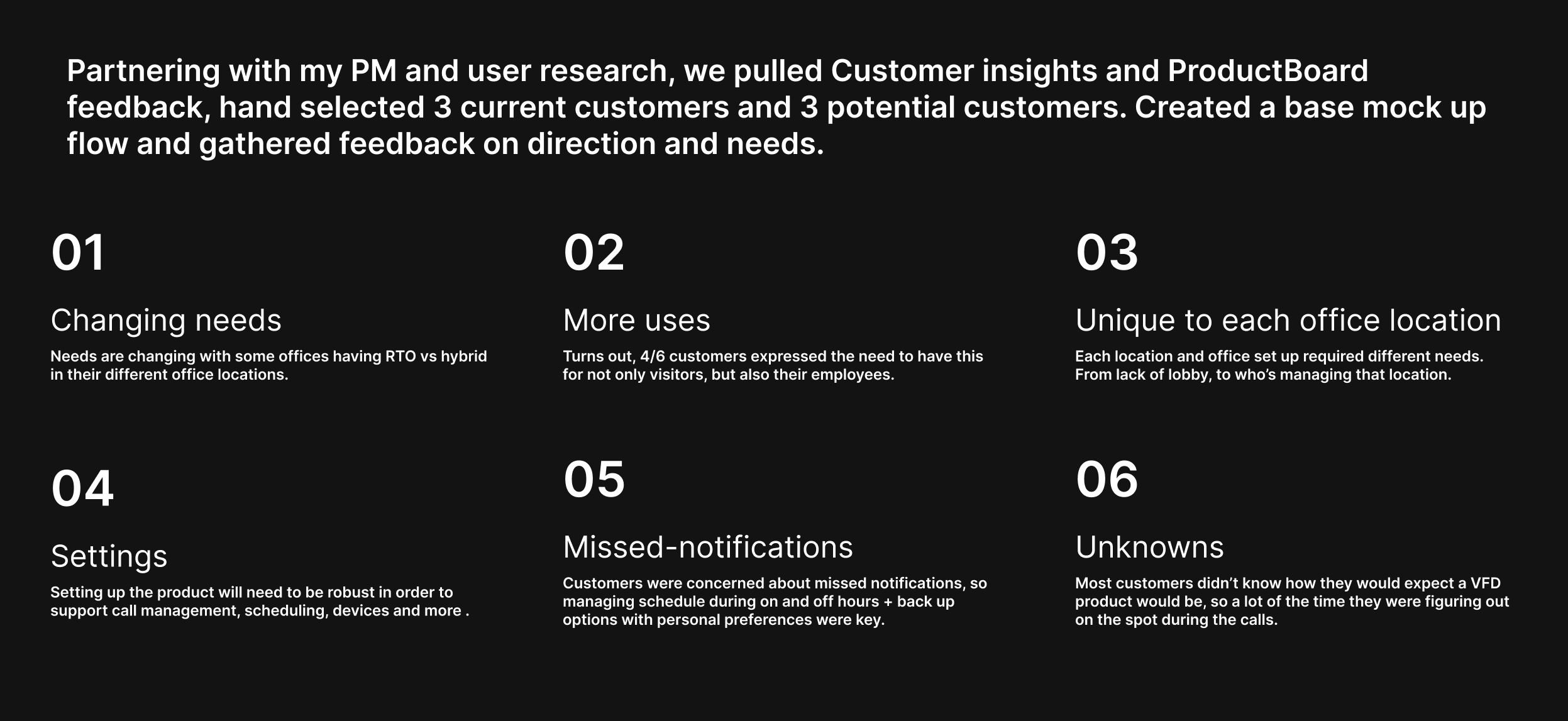

The goal
• Provide a seamless way for visitors to connect with the right person — even when no one’s physically present
• Reduce missed visitor calls and delayed responses
• Build a flexible system admins could configure per lobby, per day, per location
•Reuse existing Envoy infrastructure (iPad kiosk, integrations, notifications)
Design approach
System Thinking
Mapped full end-to-end flows (visitor → admin → fallback) and designed architecture for reusable components
Workflow Design
Designed for multiple personas with varied needs—receptionists, security, employees, and admins
Surface Coordination
Unified language and interaction patterns across kiosk, desktop, and Slack surfaces
Collaboration
Partnered with PM, engineers, and research to align on edge cases and rollout sequencing
M1 - MVP designs
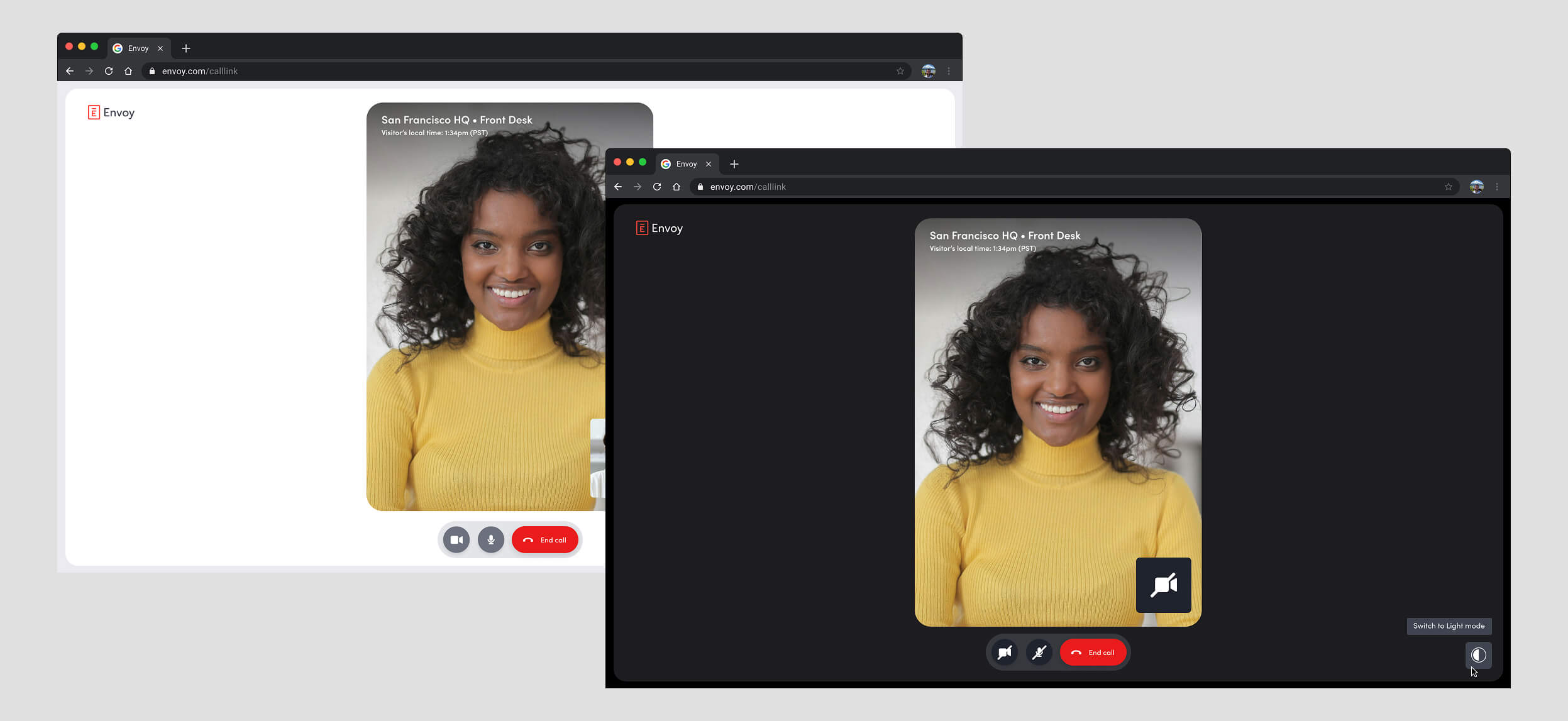
Answering a call in mobile friendly web link, while introducing dark mode in Envoy.
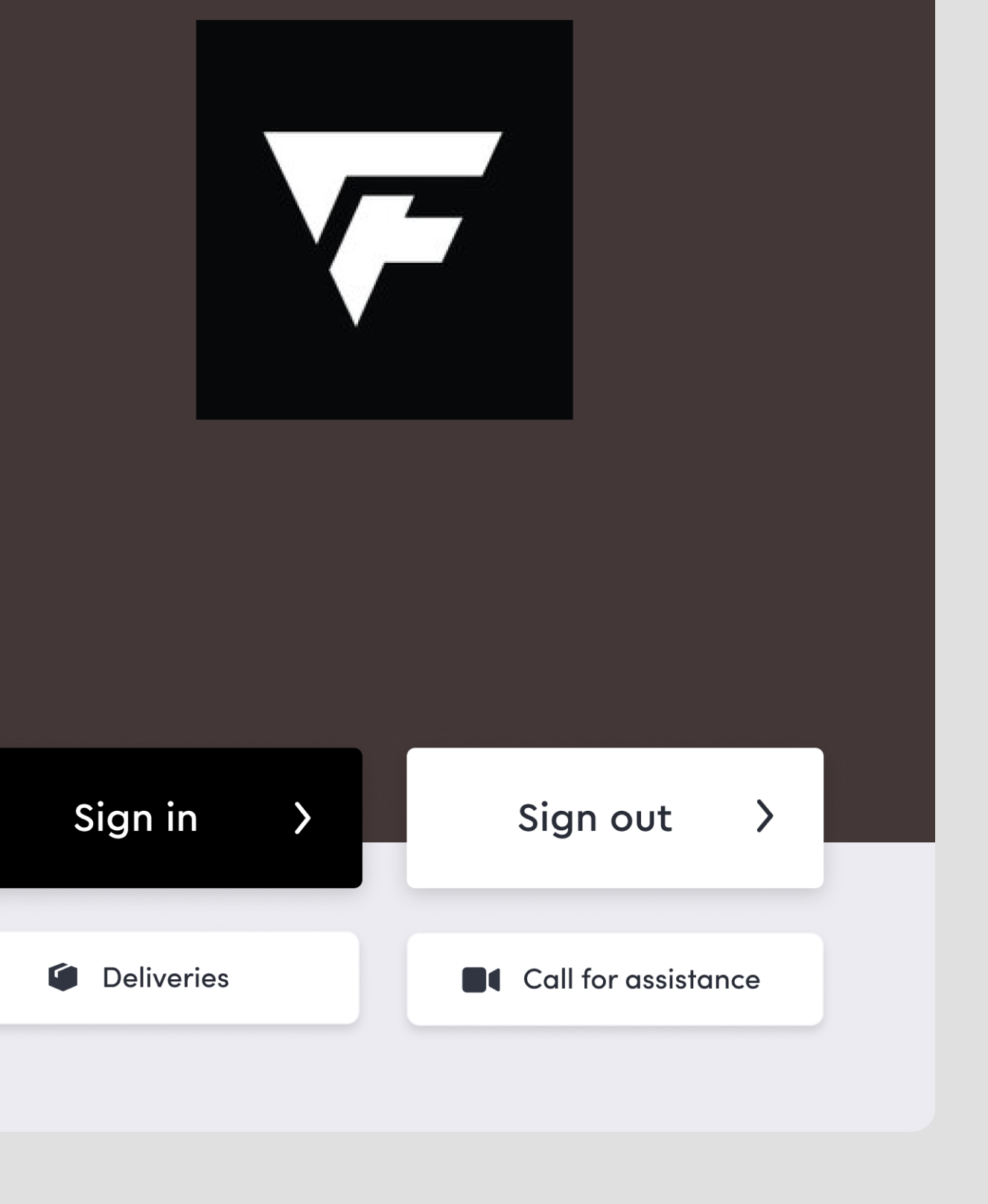
Adding a button in the kiosk welcome screen is not a simple process due to its customizability.

Some of the kiosk screen variations, including new approachable messaging and illustrations.
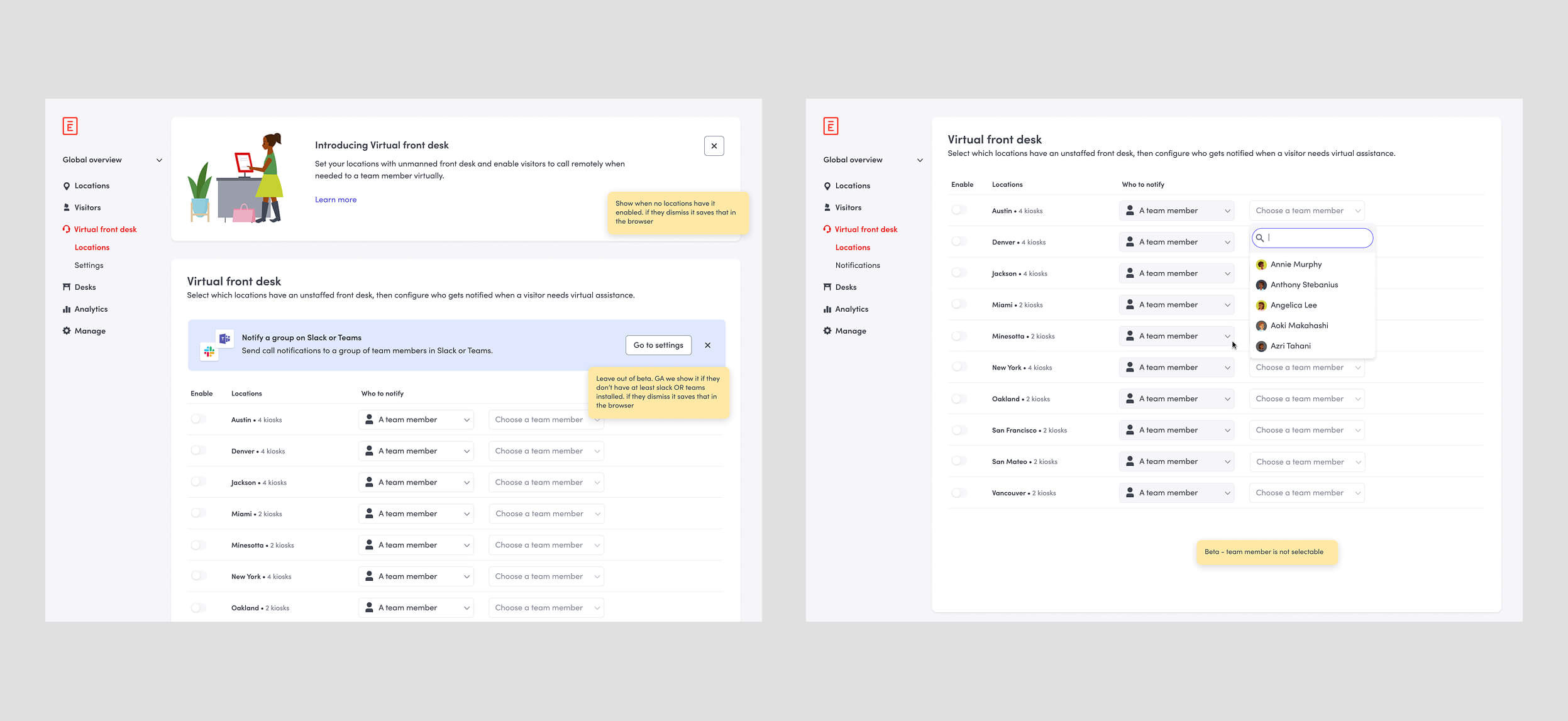
Onboarding screen and setup.
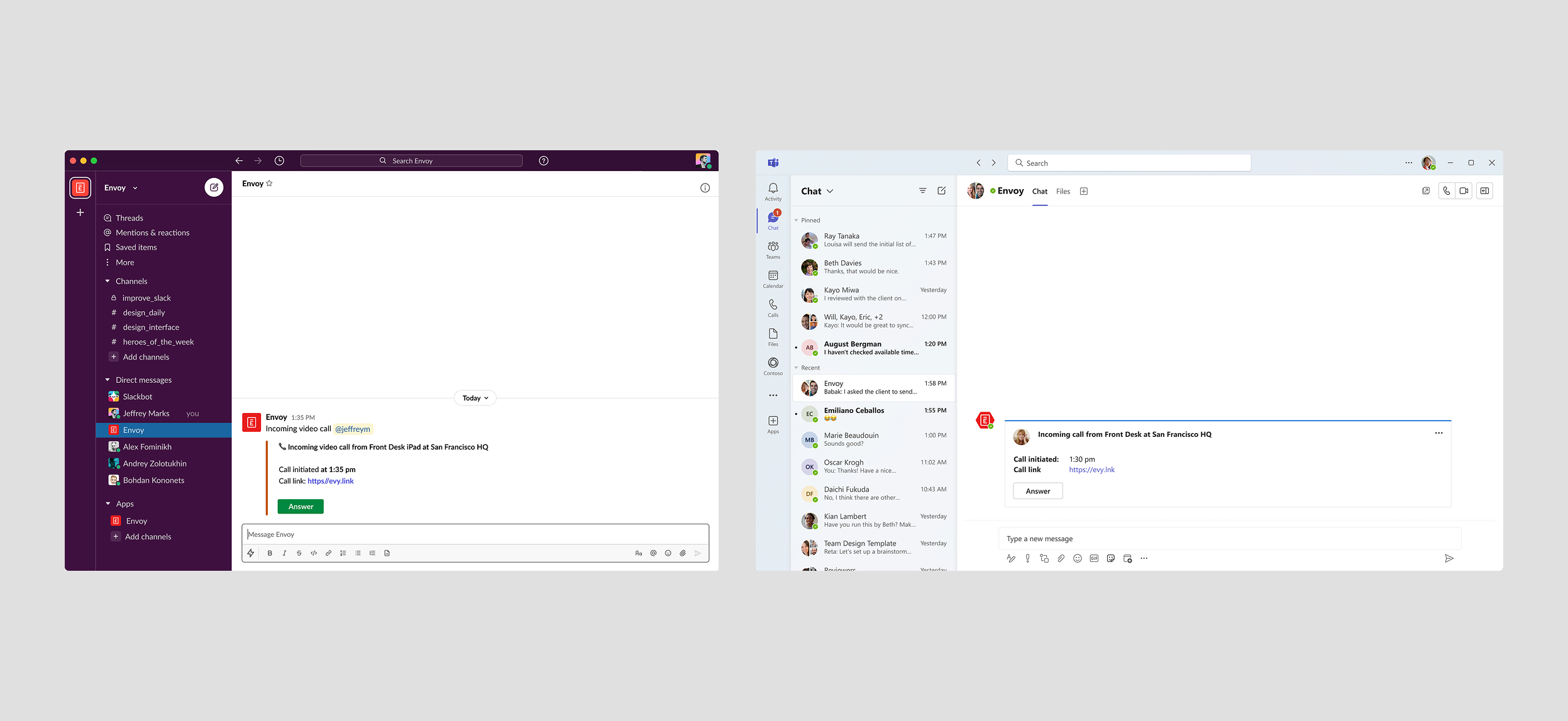
Slack and Teams integration, as part of one of the notification methods in M1.
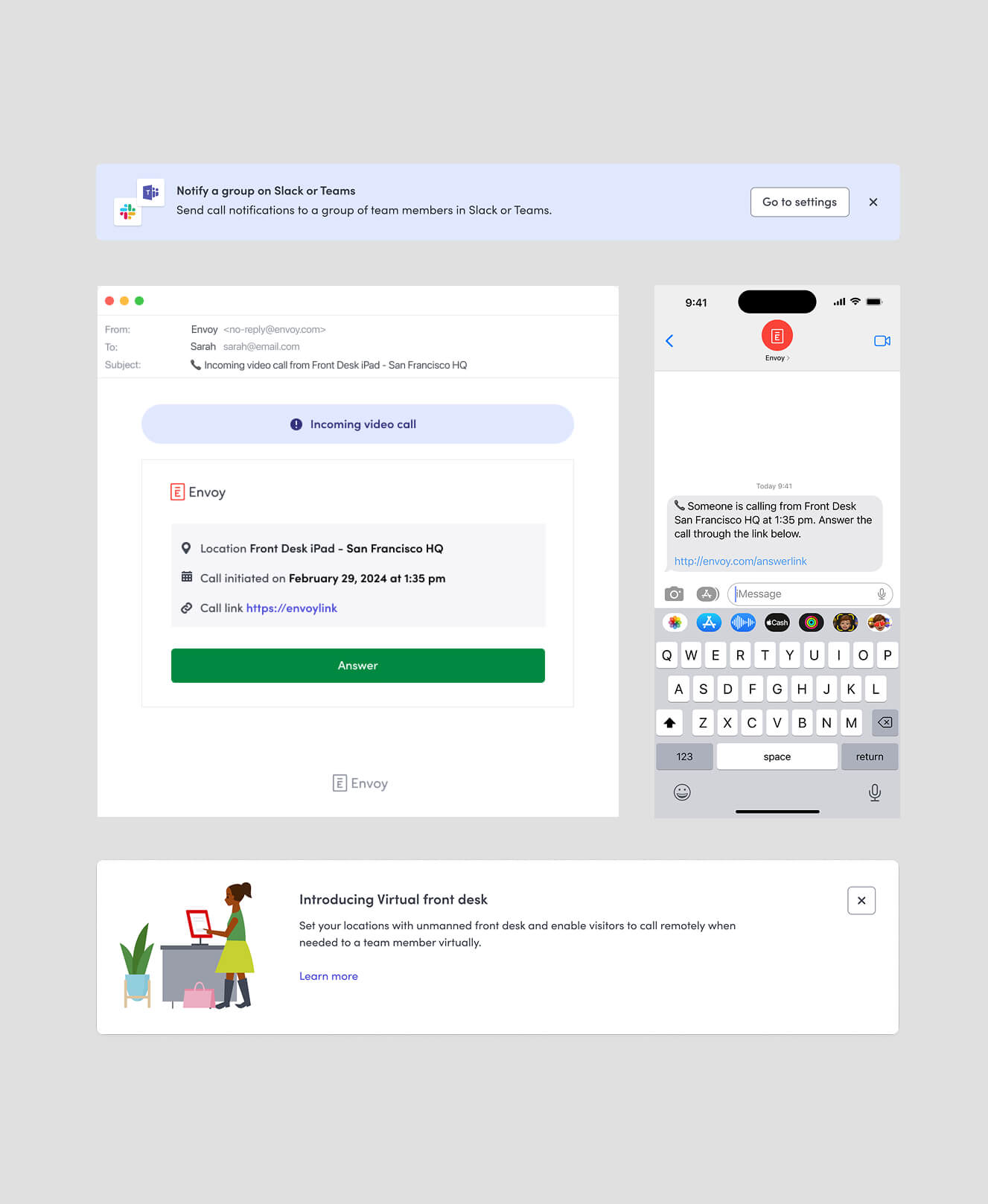
Different components + Email + Text message sample.
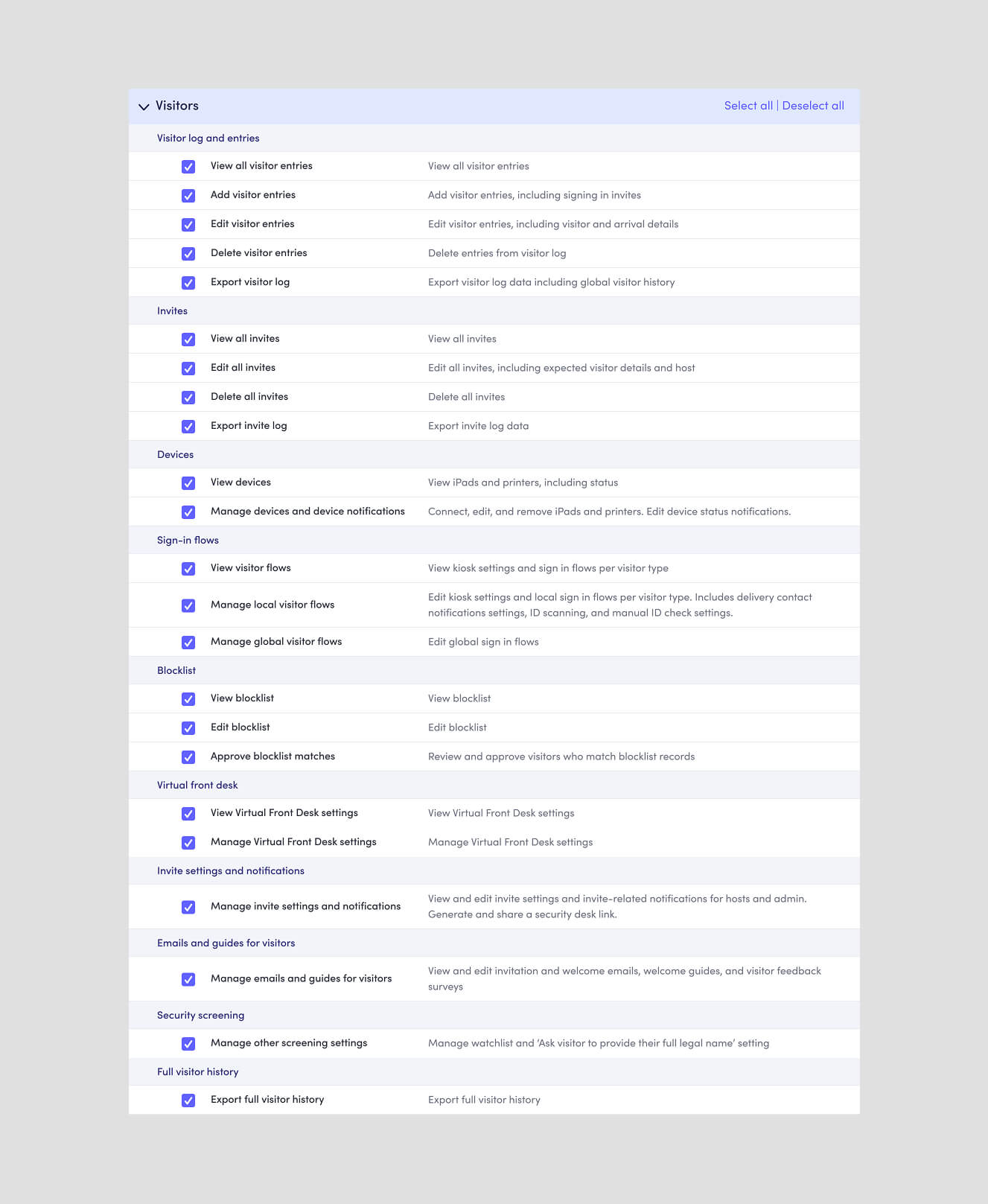
Permissions matrix to include Virtual Front Desk.
M2 - Enhancements and Follow-ups

Fallback message allows custom messaging when a team member isn't available.
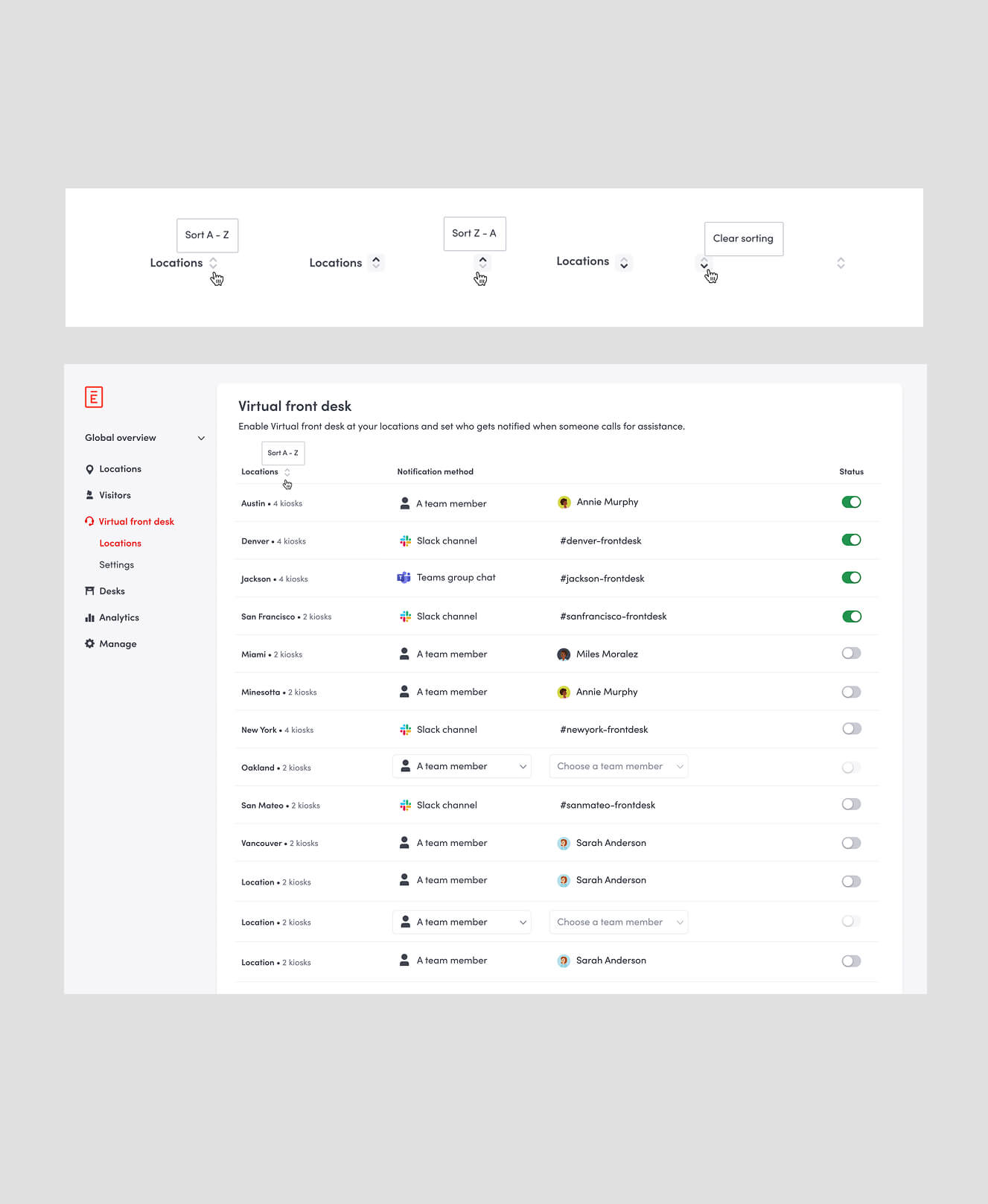
Enhancements around sorting in the set up page.
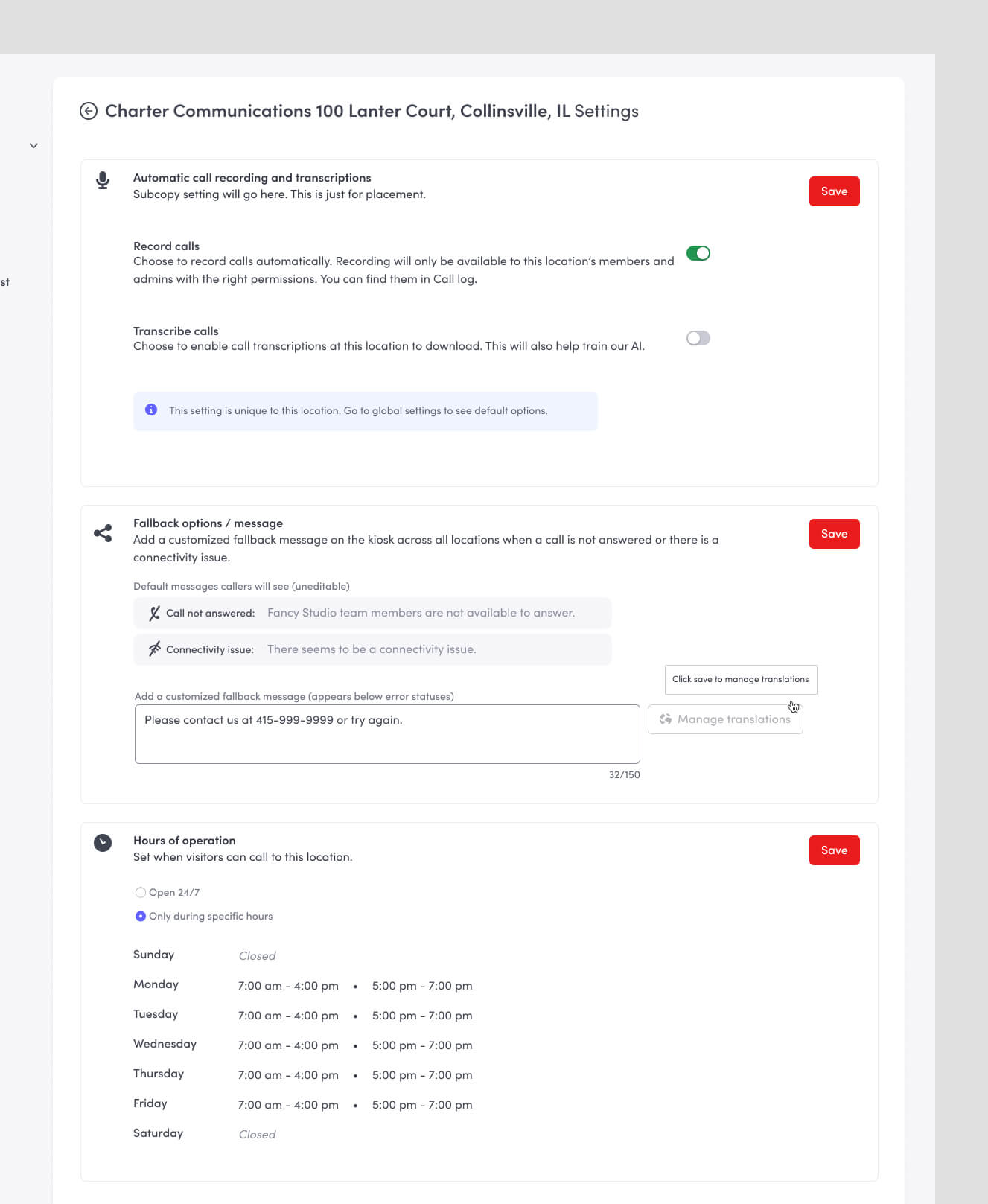
Fallback message translations and an introduction to hours of operation.
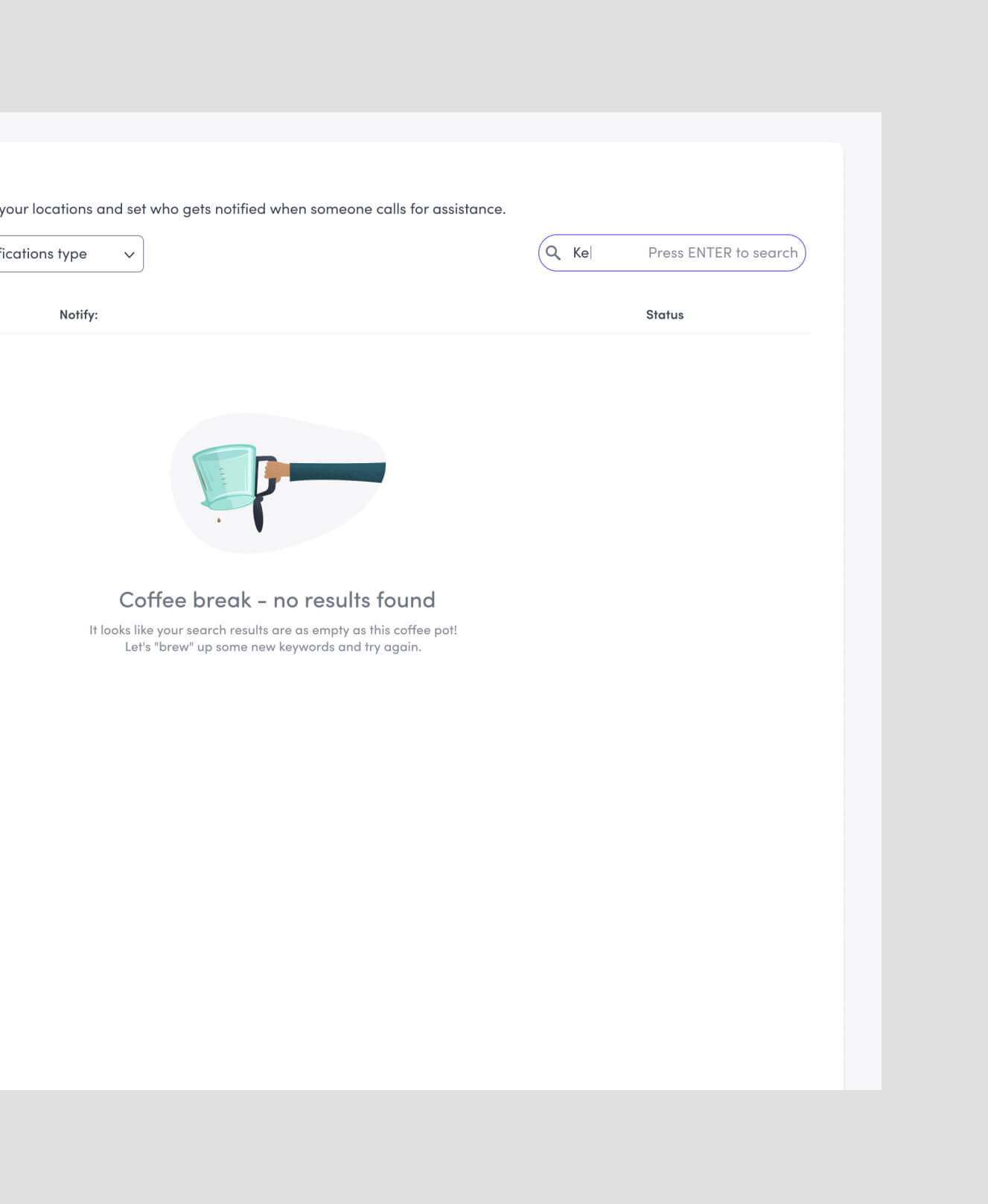
Introduce Search in set up page and renaming some columns.
M3 - Call Log
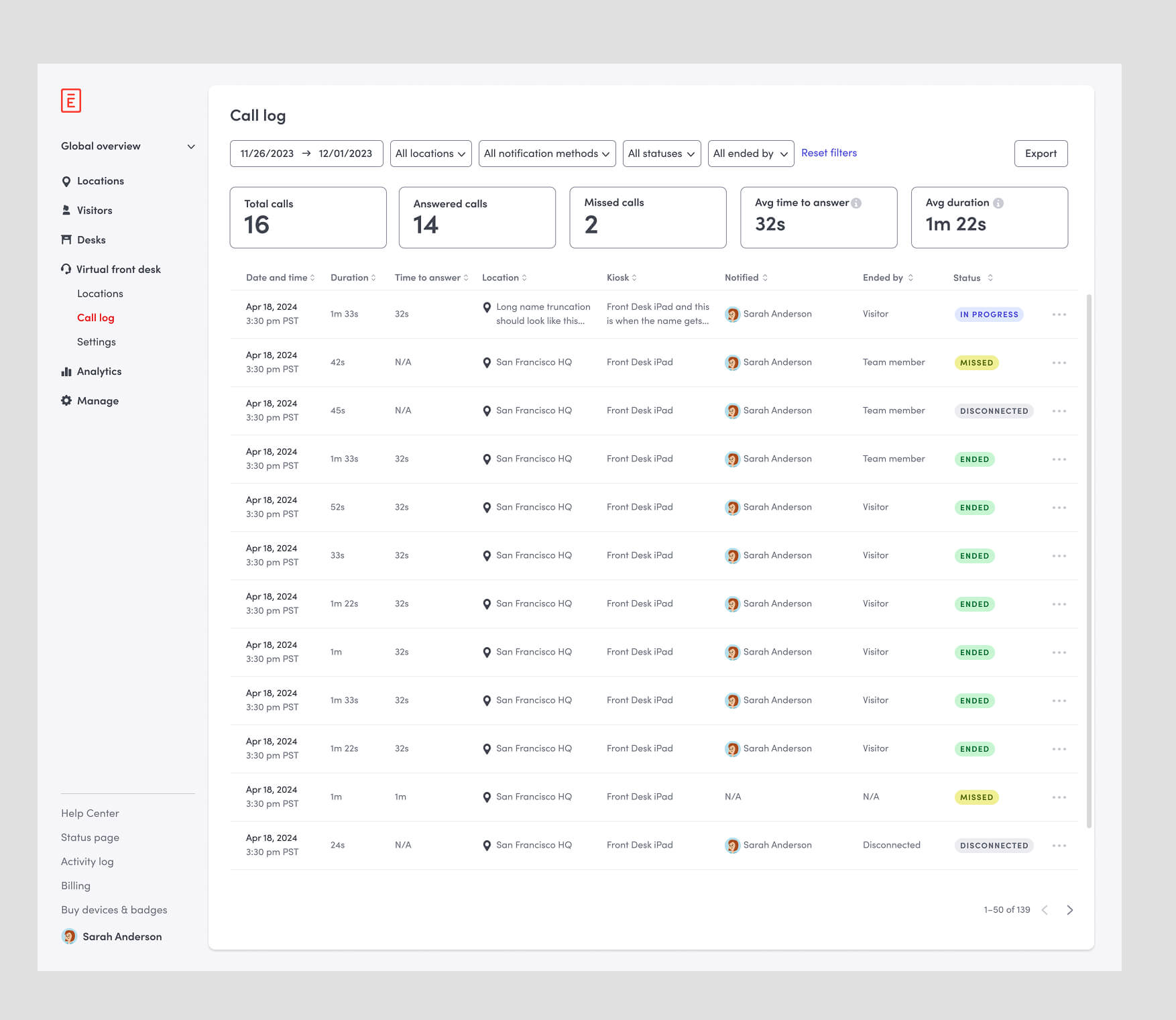
Introduce Call Logs with analytical insights.
M4 - Recording and Transcriptions
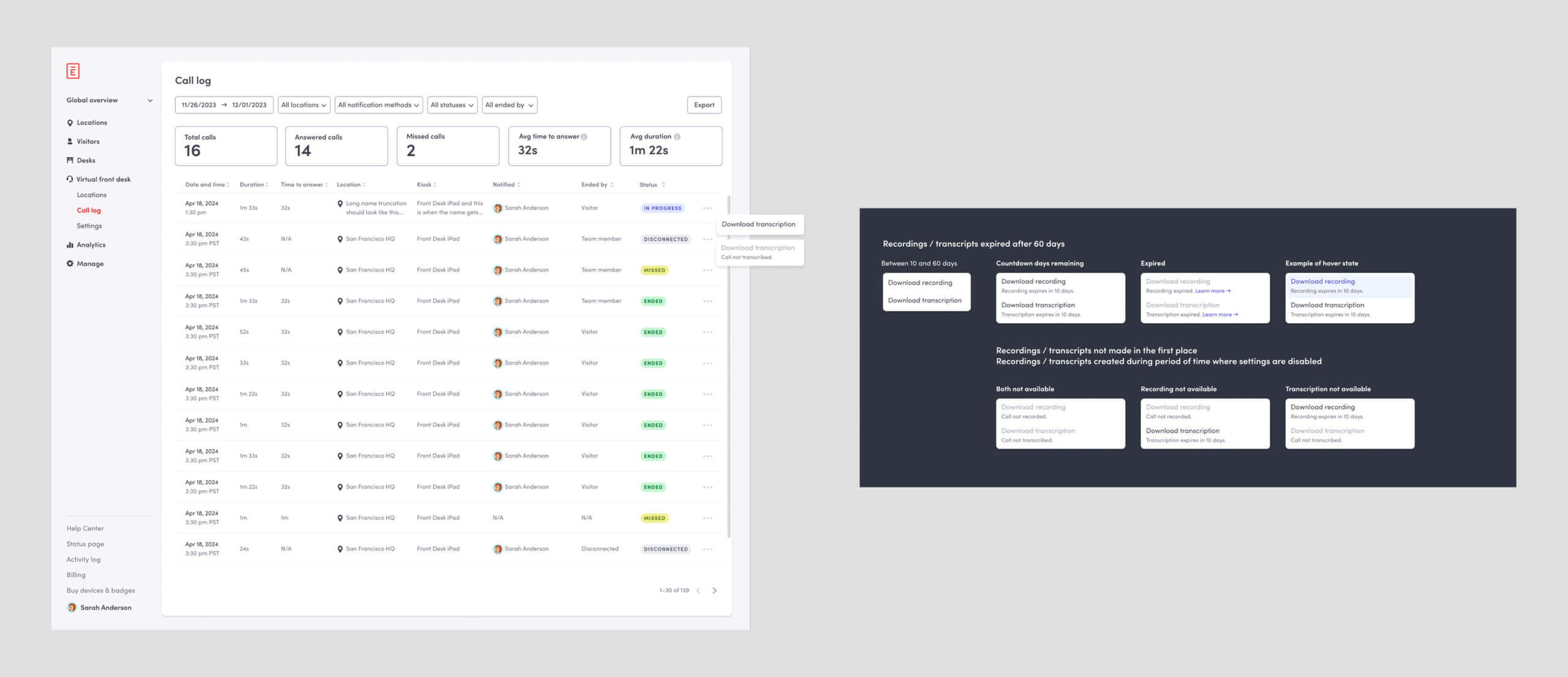
Download recording and transcriptions.
M5 - Hours of operation
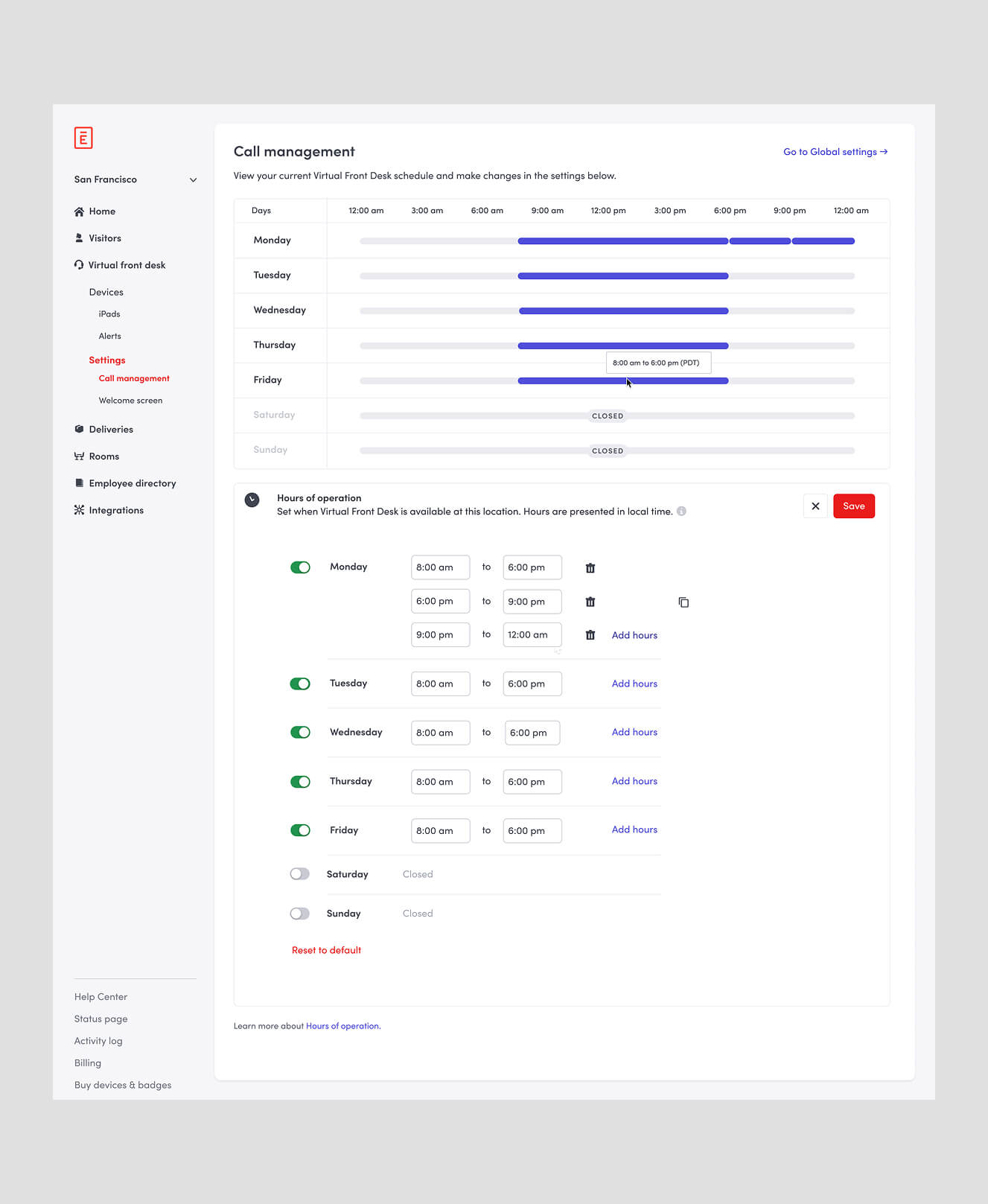
Introduced a location level hours of operation and scheduling to set up back up and routing.
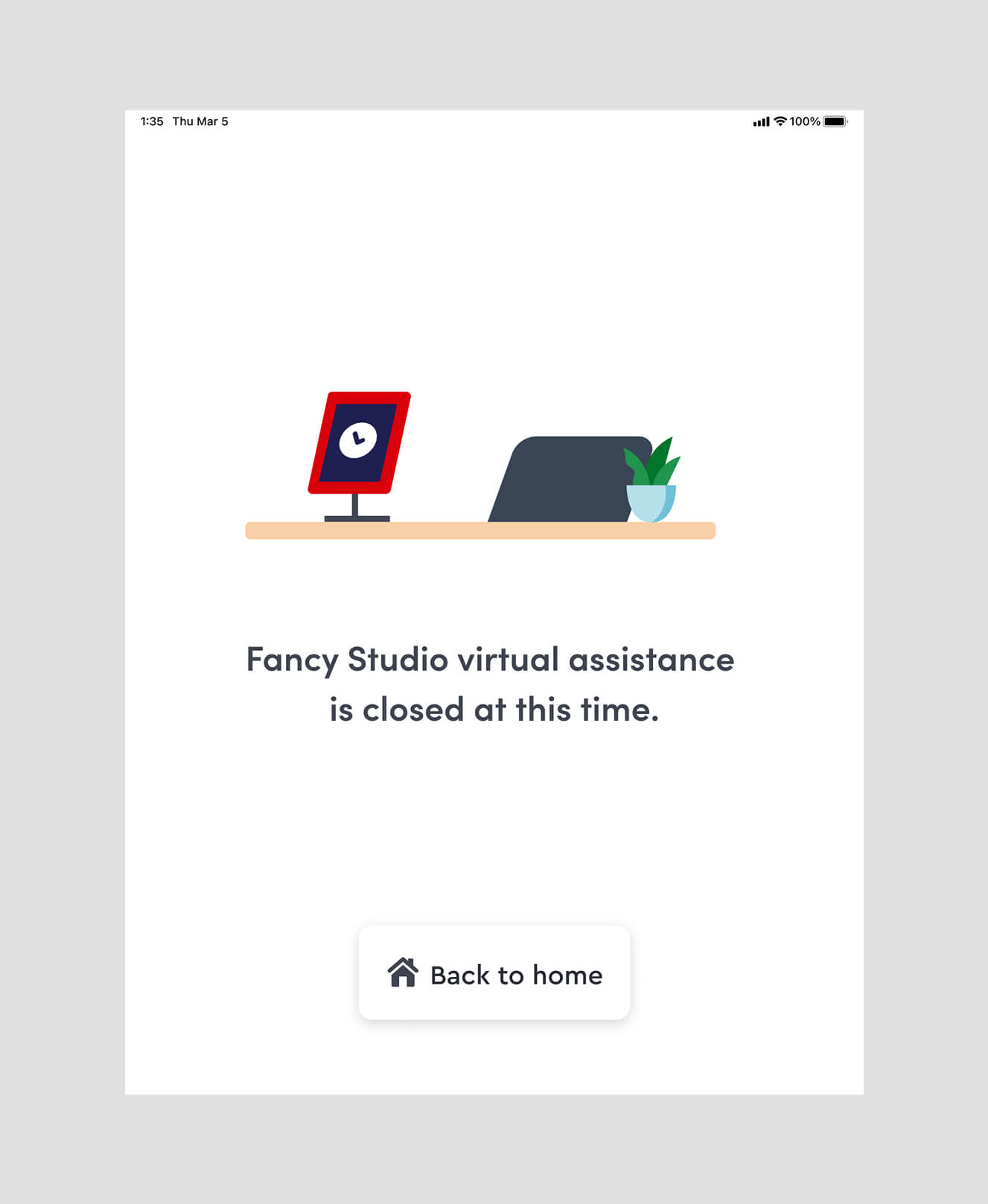
Kiosk when it's outside of operating hours.
M6 - Schedule, Back up and Routing
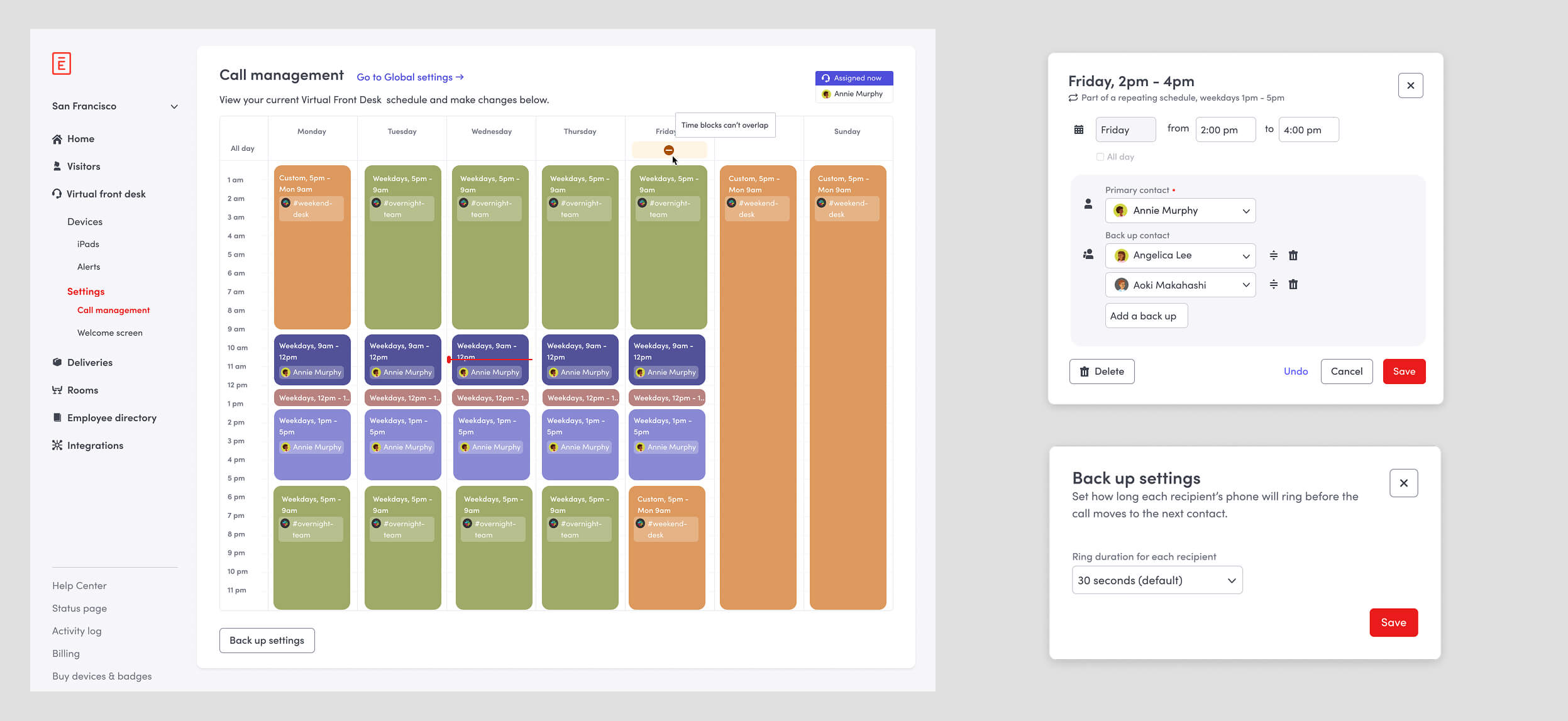
Introduce Calendar format of Back up and Routing, creating a comprehensive schedule from scratch. This would be the first Calendar feature in Envoy.
M7 - Mobile

Introduce Mobile for admins to answer, visitors / employees to call (in collaboration with another designer for quick delivery time).
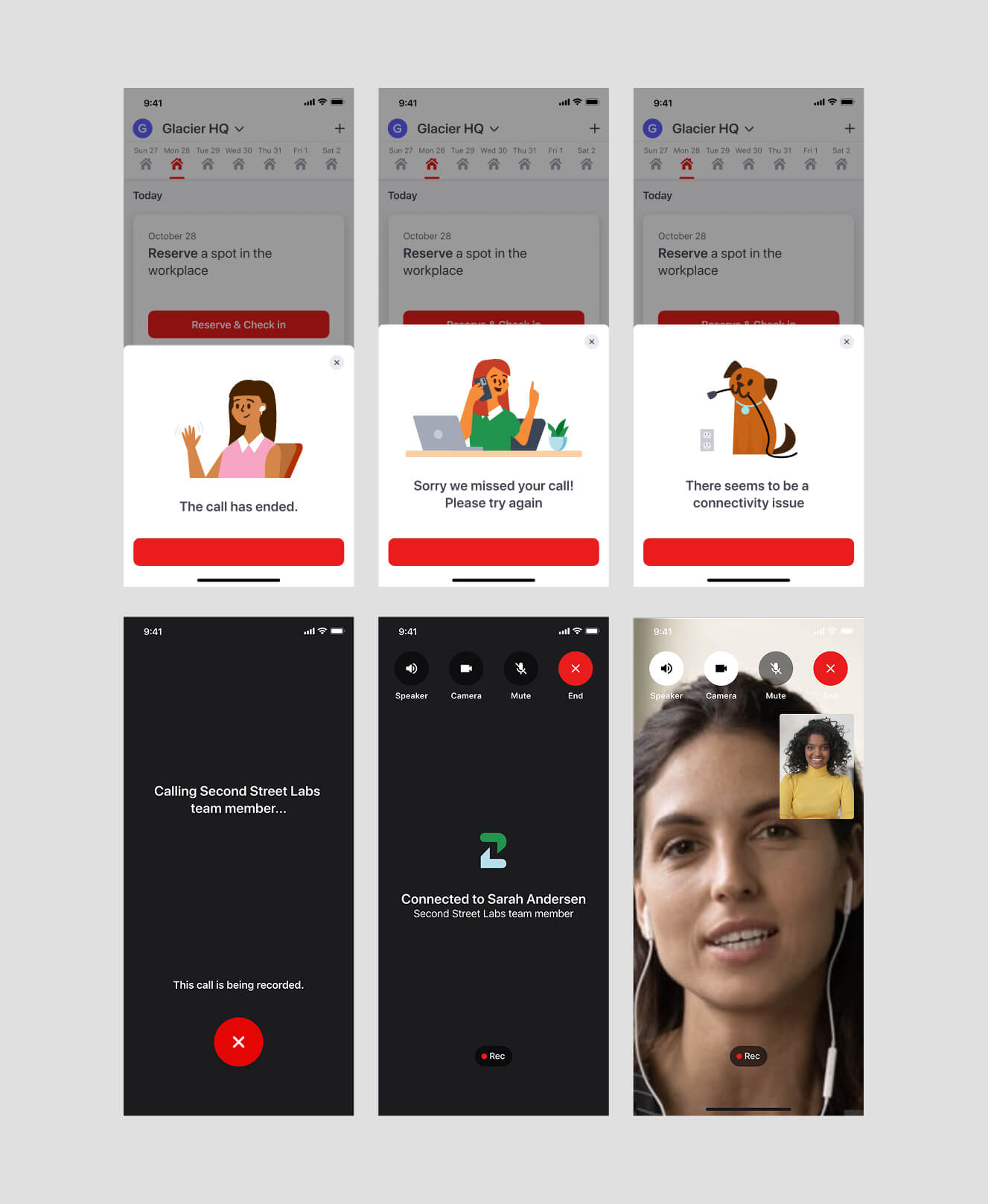
Some mobile variations.
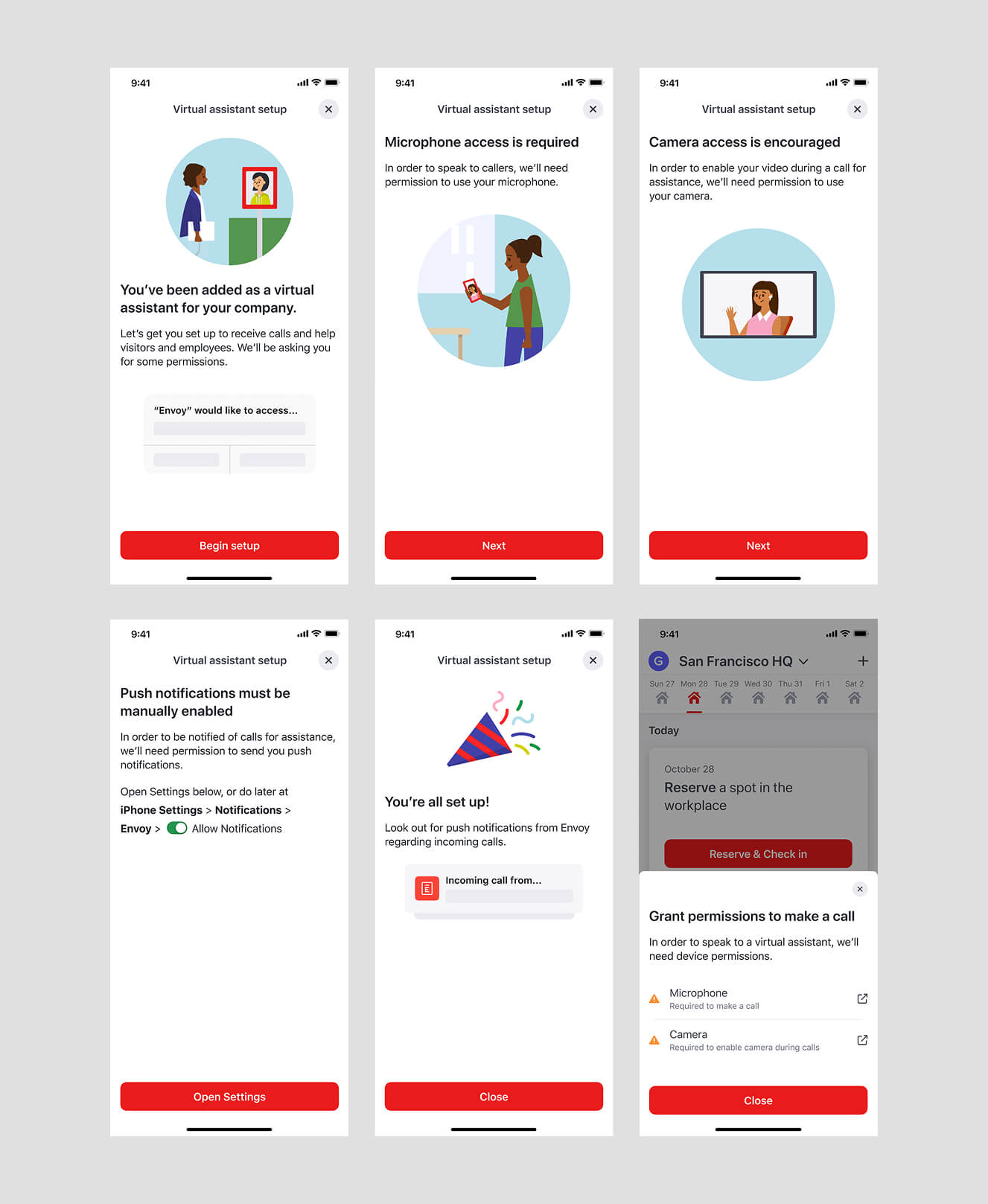
VFD set up in mobile.
Impact
• Launched across 500+ offices within 3 months
• Reduced missed visitor interactions by 42%
• Unlocked a new SKU offering and increased upsell potential
• Became one of the top-requested features from enterprise customers for innovation
Reflection
Virtual Front Desk challenged me to think across systems, surfaces, and time. Designing a product that connects visitors to real people—without anyone necessarily being present—meant building trust through thoughtful UX, clear feedback, and graceful fallbacks.
I learned how important it is to balance flexibility with simplicity: admins needed power and control, but also guidance and smart defaults. It also reinforced the value of designing with reusability in mind—many patterns we developed for VFD now inform other product areas across Envoy.
There were also a bunch of explorations that didn't make it to the cut but still in our backpocket for future iterations. Feel free to ask me to see them, there were a lot of interesting ideas that we wanted to add but depriotized.
Contact
hello@kevinlessy.com
Kevin Lessy | 2025
Designed with 🩷 and ☕️